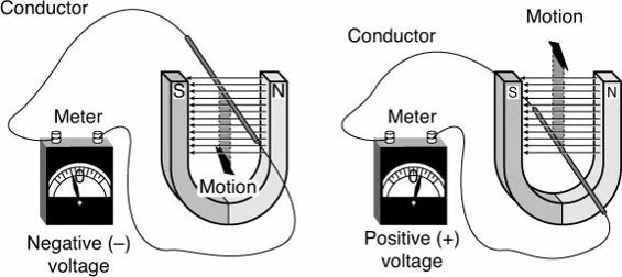Hardware Reference
In-Depth Information
Figure 8.1. A magnetic field is generated around a wire when current is passed through it.
Electromagnetism was discovered in 1819 by Danish physicist Hans Christian Oersted, when he
found that a compass needle would deflect away from pointing north when brought near a wire
conducting an electric current. When the current was shut off, the compass needle resumed its
alignment with the Earth's magnetic field and again pointed north.
The magnetic field generated by a wire conductor can exert an influence on magnetic material in the
field. When the direction of the flow of electric current or polarity is reversed, the magnetic field's
polarity also is reversed. For example, an electric motor uses electromagnetism to exert pushing and
pulling forces on magnets attached to a rotating shaft.
Another effect of electromagnetism was discovered by Michael Faraday in 1831. He found that if a
conductor is passed through a moving magnetic field, an electrical current is generated. As the
polarity of the magnetic field changes, so does the direction of the electric current's flow (see
Figure
8.2
).
Figure 8.2. Current is induced in a wire when passed through a magnetic field.
For example, an alternator, which is a type of electrical generator used in automobiles, operates by




